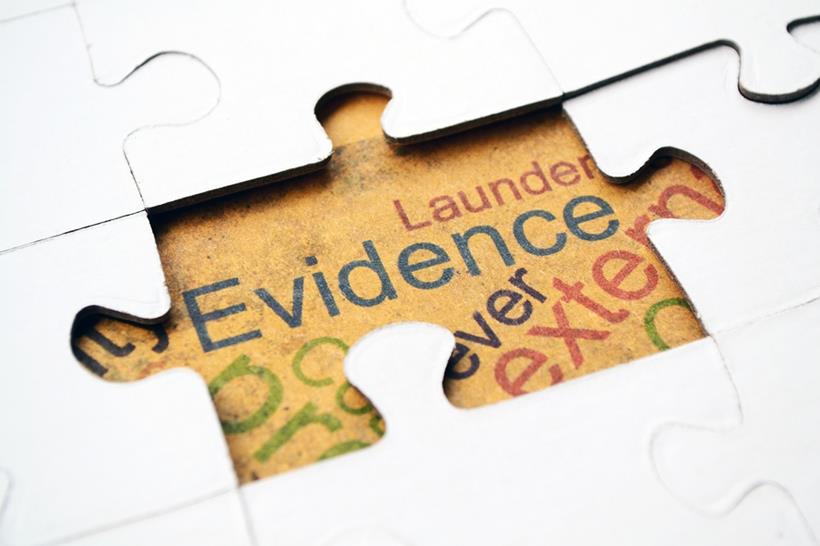
The shift in thinking and perspective required of EDRMS users to assimilate enough knowledge to ensure successful records management systems implementations is substantial. The shift is much greater than many expect, and much greater than the users themselves are able to express. If you are an experienced recordkeeper the change may be minimal. For everyone else, the Paradigm Shift can be so challenging that implementation stalls.
Think of a Paradigm Shift as a revolutionary change from one way of thinking to another. It’s a transformation, or sort of metamorphosis in the way you view the world around you. Shifting your view of the world is an uncomfortable thing to do. Human beings do not just choose to reframe their thinking, but rather it is driven by agents of change. In the case of EDRMS implementations the agents of change are record managers and project managers imposing a transformation in thinking and practice on users.
There are several paradigm shifts in the implementation of a records management system. In this article we explore the key paradigm shifts in a records management system implementation and what can be done to reduce their impact.
Technology
Let’s get the obvious and minor paradigm shift out of the way first. It is true that for some people, computer literacy is an issue. However, it is not an issue solely belonging to a records management system implementation. It belongs to any software implementation.
It is the easiest and most tangible element to point to as a reason for failure. But we know with the astounding adoption of a huge variety of technology; phones, televisions and cameras – that even technology luddites can learn the new technology when there is a desire to do so.
An ongoing blind spot with any software implementation is that too many people think technology is the big issue. The training focus is on where to click during training, rather than the actual challenges people are facing that make them forget how to do anything with the software post training. Most people forget how to open the training book ever again and that sure isn’t technology.
The technology paradigm shift isn’t really a paradigm shift at all. It is about familiarity through repetition of use or in training terms, drilling.
Other paradigm shifts necessitate a change in mind set and thinking. In training terms this is skilling and requires an experiential approach to learning. Yet, in many implementations users are left with only technical training.
Language
Business classification scheme, records, retention schedule, disposal authority, metadata, functions, activities and transactions; all part of the new language users need to become familiar with. Like learning any new language, there are difficulties. One of the major obstacles is that people do not know how to learn a language and we tend not to pay any attention to teaching them. Less than 25% of the population tend to be the type of learners who find learning words easy. The rest have to work hard to constantly interpret the language.
Learning the new terms, however, is less than half the problem of this paradigm shift. End users have to learn to recalibrate terms they are already familiar with. For example, terms like document are extended to include audio and video and a “temporary” record may be kept for twenty years or more.
Training activities need to include exercises, which whilst teaching end users what they need to know about recordkeeping basics, introduces and reinforces the new language. Back in the workplace we must give access to aids which reinforce the new language and its meanings. We must not assume that people will understand the language or place the same meaning on words as we do.
Structure
Folder structures in organisations without a strong recordkeeping ethos grow by trial and error into a structure that suits the individual or team. The folder structure “feels right” and in teams with “successful” structures most people have learned how to navigate the structure. A problem we all know is that other individuals and teams also have structure s which feel right and have little or no commonality with other structures in the organisation.
The implementation of a records management system introduces classification schemes which challenge the order of things. The first part of this paradigm shift for end users is in going from a “feels right” structure to something more formalised and universal which may not map well from my “feels right” structure.
Classification schemes built to last use the concept of functions, activities and transactions (also known as subjects to some). This brings the second part of the paradigm shift. For end users thinking goes like this:
”My folders and documents have to fit under a new structure which I can’t just learn through experimentation. Worse still, my documents from the one project, say, may fit under different functions and activities and I’ll have to make folders for all of them. And then to cap it all off, I am told to get it right so as to ensure the correct retention schedule may be applied. “
At this point the user is overwhelmed by the paradigm shift, and very tempted to take the ostrich approach to your project (head in sand).
Understanding classifications schemes and the repercussions of putting folders and files under the wrong classification is a key learning point in training those end users given the responsibility of creating the folder structure for their business unit. We must include exercises which deliver the comprehension of this paradigm change in training those users and exercises that build their confidence in overcoming the challenge of being overwhelmed.
Power/Control
Information silos are the norm in organisations. They exist at all levels from the individual to the business division. Information silos exist wherever there is an incapacity or unwillingness to share information.
When we implement records management systems there’s generally enthusiasm within the project team for the software’s ability to break the silos. It’s a major gain for the organisation. Individuals will say the concept is great and will make their life better, and sure they’ll be happy to share. The reality is, regardless of users’ ability to adjust security and access, they do not readily share.
At the individual level, the motivator for keeping information to yourself is either the need to hold on to the power that being the gatekeeper of the information provides or the need to feel in control of information to complete your role effectively. Potential loss of this source of power or control, if not dealt with through change management techniques embedded in training, is enough to prevent many people from readily sharing.
The same motivators exist at the division level where executive managers either display these same behaviours or they have not acted strongly enough to counter the inertia their subordinates have towards changing from a closed information working environment to an open one.
Demonstrating how records management systems increase the control over information by way of revisions and audit trails is part of the answer in trying to complete this paradigm shift. However, there is more that we could do. Most individuals who act as gatekeepers to information are also good analysers of the information. With a little bit of effort in asking appropriate questions and completing some analysis of our own, we can demonstrate to the individual how their power can increase as they get access to other divisions’ and departments’ information. Their source of power changes from being the controller of information to being the analyser of information across divisions and the synthesiser of new information.
Additionally, at the executive management level, we need to demonstrate not only that they have additional controls and flexibility of control at their finger- tips, but also the productivity improvements that will come to their division through sharing of information.
Thought processes
The paradigm shift that will affect every user is in the way they think about registering a record and searching for a record.
In their old world, when registering a record, it was “Think of a title and find the right folder to put it into”. In the new world, post a records management system implementation, they have to think about what else might be important such as the information in the title and the author. They need to ask themselves the question, “What are the key words, do I need to add notes or contact information, or…?”
When searching they know, “This is easy if I put in the right criteria, but what is the combination that is right”. They also have to be willing to experiment and see what happens. Most people want to get things right the first time and are reluctant to experiment for fear of making a mistake. The best searchers tend to be people who are creative and have an entrepreneurial thinking style. Searchers who have a logical thinking style tend to use their own logic without considering what other information may have seemed logical to someone else.
When searching people have to think of “What” questions to ask themselves; for example, “What was the purpose of the document?”, “What, if any, may be relevant?”, “What terms might be common in this record but not common in others?”, “What might the key words be?”.
Asking yourself “What” questions is a skill to be learned. When we implement records management systems we should ensure that the training process teaches people to become good searchers of information to bridge the thought process paradigm gap.
Summary
In rolling out a records management system, much emphasis is usually placed on getting users trained in the change in technology. However, this represents a small proportion of the paradigm shifts that people have to make to successfully utilise the technology which they have received on their desktop.
Paradigm shifts of the mind are much greater limiting factors in the successful implementation of a records management system. We require strong integrated change management and training programs to bridge the divide between the new and old paradigms. Those delivering the training need to truly understand the challenges their users face and how to address it.
© 2011 Change Factory and Linked Training






